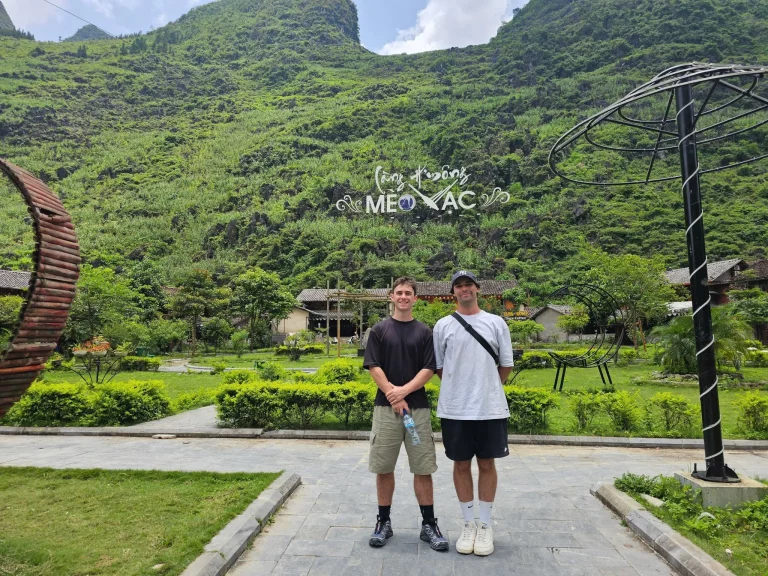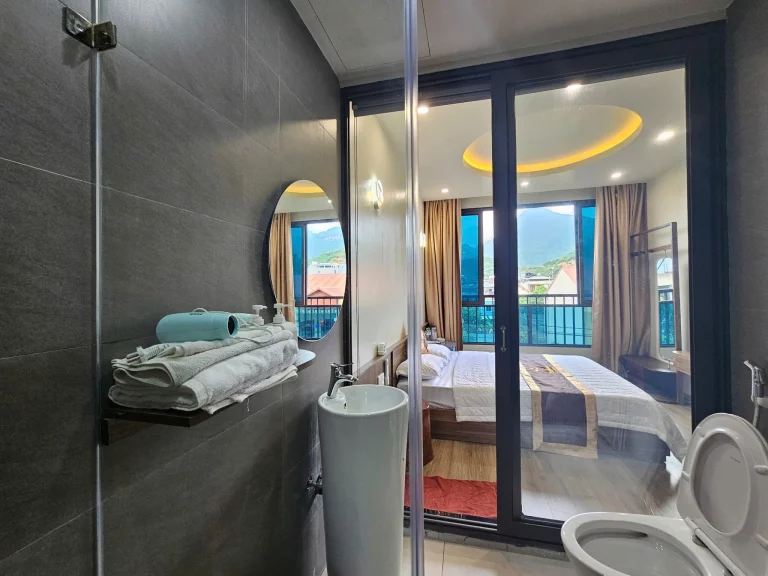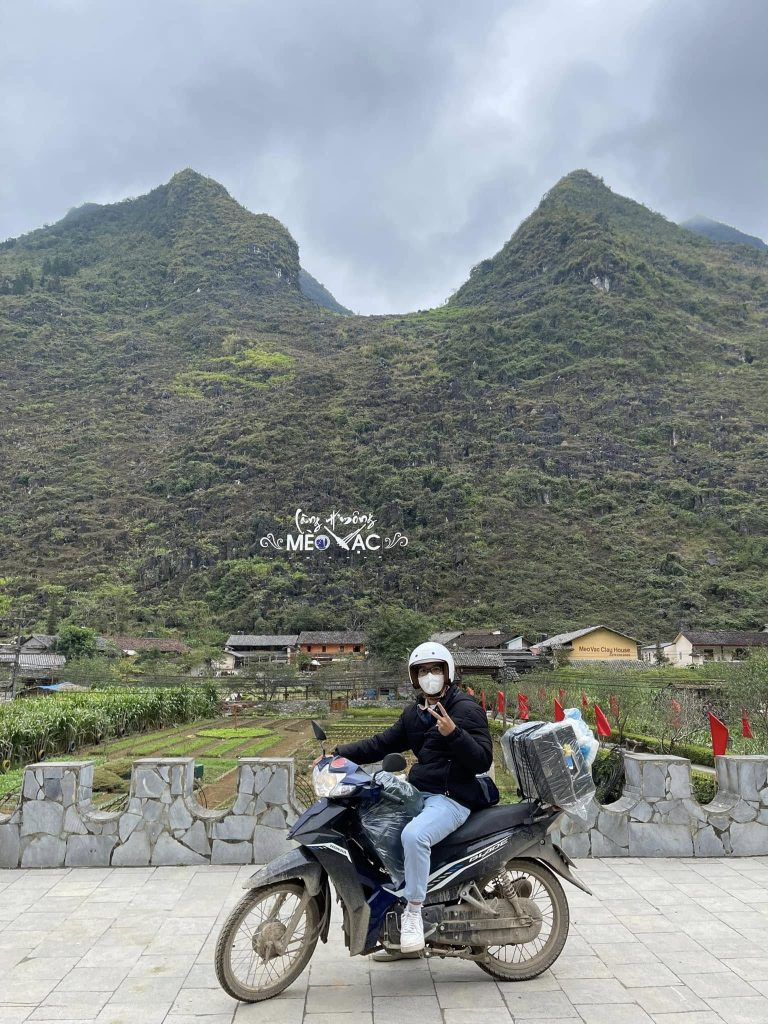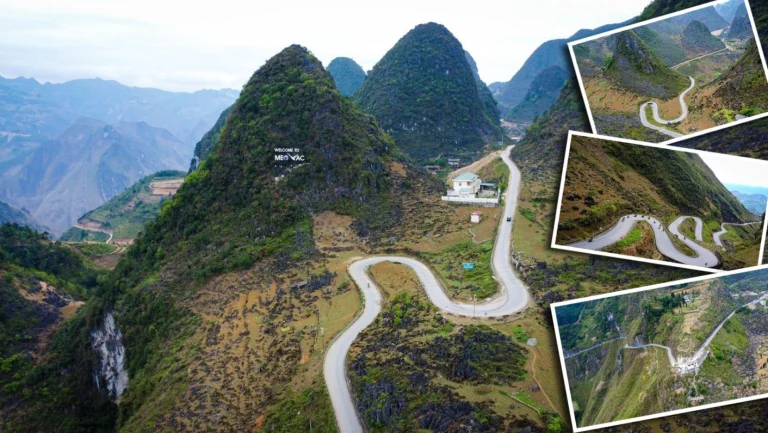Ha Giang Loop Tips for First-Time Travelers Ha Giang
homestayhagiang
Ha Giang Loop tips are essential for anyone planning to explore one of Vietnam’s most stunning motorbike routes. If you’re seeking an adventure that offers breathtaking scenery, rich cultural experiences, and the thrill of the open road, look no further than the Ha Giang Loop in northern Vietnam. This spectacular route winds through majestic mountains and vibrant ethnic villages, offering a journey that promises memories to last a lifetime. Imagine rice terraces glowing golden during harvest season or lush valleys bursting with colorful blossoms in spring.
This isn’t just a ride through beautiful landscapes it’s a deep dive into the heart of Vietnamese culture and tradition. For first-time travelers, knowing the right tips can make all the difference, helping you uncover hidden gems and enjoy unforgettable experiences along the way.
Why the Ha Giang Loop is a Must-Do in Northern Vietnam
The Ha Giang Loop isn’t merely a trip; it’s an experience that encapsulates the essence of Vietnam’s natural beauty and cultural diversity. As you journey along this breathtaking route, you’ll be mesmerized by towering karst mountains, winding rivers, and picturesque valleys dotted with traditional stilt houses. From the dramatic cliffs of Ma Pi Leng Pass to tranquil ethnic villages, every turn reveals a new wonder. One of the most rewarding Ha Giang Loop tips is to take your time and immerse yourself in cultural encounters along the way.
Home to diverse ethnic minority groups such as the H’mong, Tay, and Dao, the loop offers a rare chance to witness vibrant traditions, colorful markets, and local craftsmanship. Depending on the season, the landscape transforms spring (March to May) bursts with blooming flowers, while autumn (September to November) paints the hills in golden hues of ripe rice fields, perfect for photography. For thrill-seekers, riding a motorbike through these rugged terrains is an unforgettable adrenaline-filled adventure.
Meanwhile, those seeking peace will appreciate the loop’s quiet charm during the winter months, when the roads are less crowded, offering a true escape into nature. Whether you’re chasing excitement or serenity, the Ha Giang Loop promises a journey like no other.
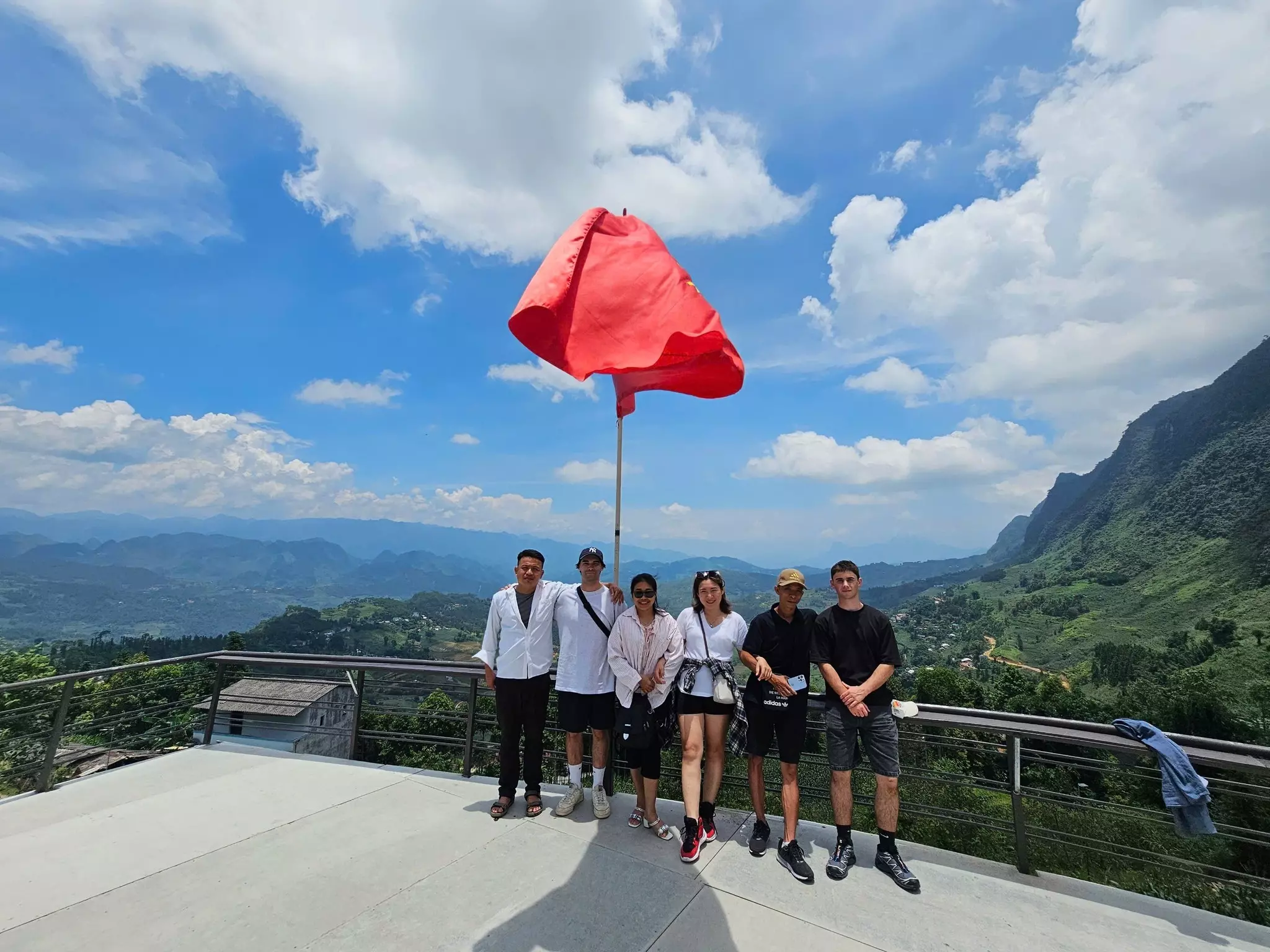
Panoramic view of majestic Ha Giang – where towering mountains blend seamlessly with the clouds and sky.
Best Time to Do the Ha Giang Loop tips
Timing your trip to the Ha Giang Loop is crucial for experiencing its beauty at its peak. As many seasoned travelers will tell you, one of the most practical Ha Giang Loop tips is to align your ride with the seasonal changes, as they dramatically transform both the scenery and cultural atmosphere.
Spring (March to May) is often considered the most vibrant season. During these months, the region awakens with cherry blossoms, peach flowers, and sprawling mustard fields. The floral explosion not only provides a visual feast but also sets the scene for various cultural festivals. With temperatures ranging from 15°C to 25°C, the weather is comfortably mild perfect for extended rides and exploration. Just pack a light raincoat, as spring showers are common and often add a fresh, misty charm to the landscape.
Autumn (September to November) is equally alluring, especially for those captivated by the rustic beauty of rural Vietnam. This is harvest season, when the iconic rice terraces turn golden, cascading across the hills like molten sunlight. The skies are clear, the air crisp, and the riding conditions ideal, with temperatures between 18°C and 22°C. It’s a dream for photographers and nature lovers alike.
Winter (December to February) brings a different charm one of solitude and stillness. The cooler weather, ranging from 8°C to 15°C, may deter some, but it’s actually a perfect time for those seeking a quiet retreat away from the crowds. The Loop becomes more meditative, ideal for travelers looking to reconnect with nature in peace.
Another important tip? Check for local festivals. Events like the Khau Vai Love Market or traditional new year celebrations offer authentic cultural experiences that can elevate your journey from memorable to truly unforgettable. With the right timing, your Ha Giang adventure will be a perfect blend of nature, culture, and personal discovery.
Transportation Tips: Motorbike, Jeep, or Passenger?
One of the most practical Ha Giang Loop tips is selecting the right mode of transportation an essential factor that can shape your entire experience. Whether you crave freedom, comfort, or ease of travel, there’s an option to suit every traveler.
Motorbike is by far the most thrilling and flexible way to conquer the Ha Giang Loop. It allows you to stop wherever and whenever inspiration strikes be it for a photo, a cup of tea with locals, or simply to breathe in the mountain air. For rugged terrain, the Honda XR150cc is a top recommendation, known for its durability and performance on steep roads. Just be sure to inspect the bike carefully, especially the brakes, lights, and tires. If you’re not confident riding solo, consider hiring an Easy Rider a local guide who will handle the driving while you sit back and take in the stunning views with peace of mind.
Jeep tours offer a comfortable alternative for families or those who prefer to avoid the physical demands of riding. These guided trips are perfect for small groups, providing a relaxed yet immersive experience without the risks associated with navigating sharp mountain passes. Though more expensive than motorbike rentals, jeep tours emphasize safety and convenience while still offering access to spectacular viewpoints and cultural sites.
Passenger vehicles, such as cars with private drivers, are ideal for travelers seeking maximum convenience particularly elderly visitors or those short on time. With a personal driver at the wheel, you can explore the Loop stress-free, without needing to worry about directions or road conditions.
Ultimately, the best way to explore the Ha Giang Loop depends on your comfort level, travel style, and appetite for adventure. Whether you choose the raw excitement of a motorbike, the convenience of a jeep, or the ease of a passenger car, each mode of transport reveals a different side of this unforgettable journey.
Where to Stay on the Loop: Accommodation Ha Giang loop Tips
One of the often-overlooked but valuable Ha Giang Loop tips is selecting the right accommodation, as where you stay can greatly enhance your overall experience. From budget hostels to family-run homestays, the region offers a variety of options that cater to different travel styles and budgets.
Ha Giang City, the starting point of most journeys, provides convenient and comfortable lodging. Zinghome Ha Giang is a solid choice for backpackers, offering reasonable rates and basic amenities. For a more boutique feel without breaking the bank, ZingHome delivers a cozy atmosphere that blends affordability with comfort great for those easing into the adventure ahead.
In Dong Van, one of the Loop’s most popular stops, you’ll find accommodations that reflect the town’s charming mix of history and culture. Lô Lô Chải village is praised for its central location and welcoming vibe, while Lô Lô Chải village offers a more immersive cultural experience, complete with traditional architecture and family-style meals.
For travelers seeking tranquility and a raw connection with nature, Du Gia is the place to be. Nestled deep in the mountains, Du Già Homestay is a favorite for its breathtaking views and authentic village feel ideal for unwinding after a long ride.

Karst landscape in Ha Giang with sharp “cat ear” limestone peaks – a signature of Dong Van Karst Plateau.
Packing Essentials for the Ha Giang Loop tips
When it comes to embarking on the Ha Giang Loop, one of the most important Ha Giang Loop tips is to pack smart. The region’s weather can shift quickly, and the terrain ranges from smooth highways to rugged mountain paths—so preparation is key to enjoying a safe and comfortable journey.
Clothing should be versatile and weather-appropriate. Layering is essential: pack a waterproof jacket for sudden rains, warm layers for chilly evenings, and lightweight, breathable clothes for daytime heat. Equally important is footwear—choose sturdy, comfortable shoes that can handle both village strolls and hillside hikes.
For those traveling by motorbike, safety gear is non-negotiable. A quality helmet, gloves, and knee or elbow pads can make a big difference in both comfort and protection on winding mountain roads. Your personal items should include basic toiletries (like a toothbrush, toothpaste, insect repellent, and a quick-dry towel), along with a small first-aid kit in case of minor scrapes or stomach troubles. Don’t forget your electronics: a good camera or smartphone will help you capture the Loop’s dramatic landscapes. Bring extra batteries or a portable charger, as electricity may be limited in remote areas.
Hydration and snacks also deserve attention. A reusable water bottle is a must, and packing energy bars or nuts will keep you fueled during long stretches between towns or scenic stops. By packing mindfully and covering all the basics, you not only make your journey smoother but also give yourself peace of mind allowing you to fully immerse in the raw beauty and cultural richness that the Ha Giang Loop offers.
Must-See Stops and Hidden Gems Along the Loop
One of the most valuable Ha Giang Loop tips is to plan your route with both iconic landmarks and lesser-known spots in mind. The loop is rich in natural beauty and cultural experiences, and knowing where to stop can truly elevate your journey.
Dong Van Karst Plateau, a designated UNESCO Global Geopark, is a geological wonder that showcases some of the most dramatic landscapes in Vietnam. Towering limestone formations tell the story of millions of years of Earth’s history, while the region remains a cultural hub, home to diverse ethnic minority groups. It’s an all-year-round destination for those drawn to both nature and anthropology.
Next comes Ma Pi Leng Pass, one of the most legendary roads in Vietnam. Famous for its jaw-dropping cliffs and winding curves, the pass offers panoramic views of the emerald Nho Que River snaking through deep gorges. For photographers and nature lovers, the best time to stop is at sunrise or late afternoon when the light softens and the landscape turns golden.
Wandering off the main route takes you into ethnic villages, where authentic cultural encounters await. Visiting on local market days such as those in Meo Vac or Dong Van adds a vibrant layer to your trip, with colorful textiles, local produce, and communal festivities on full display. Engaging with locals through shared meals or participating in traditional activities offers a genuine sense of connection.
Another Ha Giang Loop tip is to keep an eye out for hidden waterfalls, particularly around areas like Du Gia. These secluded spots may not appear on tourist maps but reward the curious traveler with serene, untouched nature perfect for a refreshing dip after a long ride during the summer months.
By mixing popular highlights with off-the-beaten-path gems, you’ll experience the full depth and magic of what the Ha Giang Loop has to offer.
Food and Drink Tips on the Ha Giang Loop tips
One of the most enriching Ha Giang Loop tips is to dive into the local cuisine as a way to connect more deeply with the region’s culture. Food in Ha Giang isn’t just about sustenance—it’s about community, tradition, and discovery. However, to fully enjoy the experience, it’s important to keep a few safety and cultural considerations in mind.
Street food is a cornerstone of Vietnamese culinary culture, and Ha Giang is no exception. Sampling local dishes at bustling market stalls is both affordable and authentic. To stay safe, always choose vendors with high foot traffic—where locals eat is usually where the food is freshest. Must-try regional specialties include “thắng cố” (a hearty horse meat stew traditionally enjoyed by the H’mong people), “xôi ngũ sắc” (colorful sticky rice dyed with natural herbs), and flavorful grilled meats from roadside BBQ stalls.
Safe hydration practices are equally important during your loop journey. Carry a reusable water bottle and refill it only with filtered or bottled water. Avoid drinking tap water, even in restaurants or homestays, as your system may not be accustomed to it.
Understanding and embracing local dining etiquette also enhances your cultural immersion. Meals in the north are often communal dishes are placed in the center, and everyone shares. It’s a great opportunity to try a variety of flavors and bond with locals or fellow travelers. Don’t be surprised if dining takes place on low stools or mats; it’s all part of the experience.
By making time to explore the culinary landscape of the Ha Giang Loop, each meal becomes a story, and every flavor adds depth to your adventure turning food into one of the journey’s most memorable highlights.
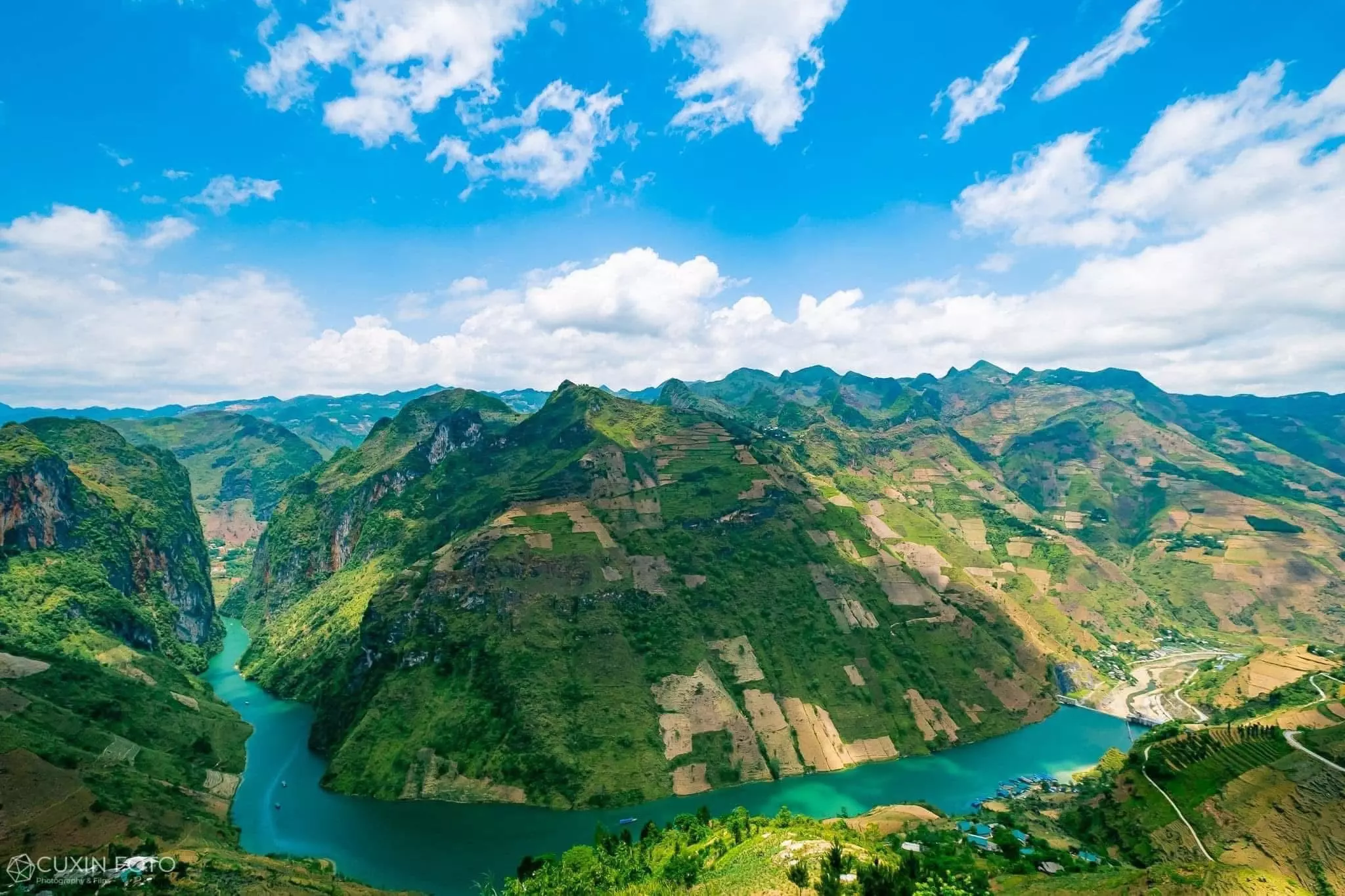
Emerald-green Nho Que River winding through steep limestone cliffs in Ha Giang, Vietnam.
Safety Tips for Riding the Ha Giang Loop Tips
One of the most important Ha Giang Loop tips is to prioritize safety at every stage of your journey. While the winding mountain roads and jaw-dropping landscapes are what make the Loop so memorable, they can also be challenging even for experienced riders. With a bit of preparation and caution, you can fully enjoy the adventure without unnecessary risks.
Start by equipping yourself with the right safety gear. A high-quality full-face helmet is essential it provides the best protection in case of falls and shields you from dust and wind. Pair it with protective clothing, such as long-sleeved shirts, durable pants, gloves, and knee pads to protect against scrapes or road rash.
Next, understand the legal requirements before you hit the road. An International Driver’s Permit (IDP) with an A1 endorsement is mandatory for riding motorbikes legally in Vietnam. Getting caught without one may lead to heavy fines or travel delays. Also, take time to review Vietnamese traffic laws knowing local road rules will help you anticipate how other drivers behave, especially in rural or mountainous areas.
When it comes to road navigation, always ride with caution. The terrain can be unpredictable, with sharp bends, sudden drops, or loose gravel. It’s best to maintain a speed of under 50 km/h, particularly when approaching steep curves or foggy sections. One of the golden Ha Giang Loop tips is to avoid riding at night, as limited visibility increases the risk of accidents. Take frequent breaks to avoid fatigue, hydrate often, and give your body time to rest.
Don’t forget about weather awareness, especially in a region as mountainous as Ha Giang. Rain can make roads slippery and dangerous, so be ready to slow down or pull over when needed. Temperatures can drop suddenly especially at higher elevations so pack a raincoat and warm layers in case of unexpected changes.
By staying informed and well-prepared, you’ll not only protect yourself but also enhance the overall experience making your journey along the Ha Giang Loop both exhilarating and safe.
Ha Giang Loop Tips: How Much Does the Ha Giang Loop Cost?
One of the most practical Ha Giang Loop tips is to plan your budget ahead of time. While this northern Vietnamese gem offers incredible experiences at relatively low costs, knowing what to expect in terms of expenses helps ensure you enjoy the trip without financial surprises.
Tour costs vary depending on your mode of travel. If you’re going for a self-drive motorbike tour, you should budget around $130–$200 for a 3–4 day itinerary, which typically includes bike rental, fuel, and basic accommodation. Opting for a local Easy Rider (a guide who drives the motorbike for you) will raise the cost to about $170–$260, but provides the added benefit of a stress-free ride and cultural insights. If you prefer hiking, group trekking tours usually range from $70–$140, while private treks can cost between $120–$200 for a two-day journey.
Accommodation is generally affordable. Most homestays cost around $8–$15 per night, offering a warm, local experience ideal for budget travelers. For more comfort, guesthouses typically charge $15–$30, while boutique hotels with added amenities range from $40–$80 per night.
Don’t forget to factor in daily expenses. Local meals are delightfully cheap $1–$3 per day is usually enough if you’re eating at small eateries or street stalls. Travel insurance is a wise investment at around $5–$10. If you’re joining guided tours, budgeting $3–$5 per day for tips is both courteous and appreciated. As for souvenirs, set aside $5–$50, depending on whether you’re picking up a small handmade trinket or a local textile.
Bonus Budgeting Tips:
-
Travel Season Matters: Prices can rise during peak seasons (e.g., spring bloom or harvest time), so plan accordingly.
-
Support Local Communities: Hiring local guides or staying at family-run homestays not only enhances your experience but directly benefits the people who live in the region.
With a clear understanding of the expected costs, you can confidently set your budget and focus on what really matters—soaking in the unforgettable scenery and cultural richness of the Ha Giang Loop.
Ha Giang Loop tips Trip Unforgettable
Beyond route planning and safety, some of the most meaningful Ha Giang Loop tips focus on how you immerse yourself in the experience. Here are a few additional suggestions to elevate your adventure and make every moment count.
Engaging with locals is one of the most enriching aspects of traveling through Ha Giang. If your timing aligns, try to participate in local festivals, where you’ll witness vibrant ethnic traditions, music, and dance. Better yet, choose to stay in family-run homestays these not only offer an authentic glimpse into daily life but also allow you to enjoy homemade meals and warm conversations that leave lasting impressions.
Another tip is to capture the memories along the way. While snapping photos is second nature for many travelers, consider taking it a step further by keeping a travel journal or blog. Writing about your experiences, thoughts, and encounters adds depth to your journey and is something you’ll cherish later. You can also collect meaningful souvenirs such as local artwork or crafts, which support regional artisans and serve as physical reminders of your time in the mountains.
When it comes to packing, less is more. One of the smartest Ha Giang Loop tips is to prioritize essentials and avoid overpacking, as you’ll be on the move frequently. Importantly, carry enough cash, especially when heading into remote villages where card payment is often unavailable.
Finally, be open to change. Some of the best travel moments happen when things don’t go as planned. Stay flexible with your itinerary you might hear about a hidden waterfall, a village market, or a community event that wasn’t on your original route. Also, travel with an open heart: respect local customs, be curious, and embrace cultural differences as part of the adventure.
By embracing these additional tips, you’ll not only navigate the Ha Giang Loop with ease, but you’ll also create a richer, more meaningful travel experience filled with moments and memories that stay with you long after the journey ends.
Ha Giang Loop tips: Go Solo or Book a Full Package Tour?
One of the most common yet important Ha Giang Loop tips is deciding whether to explore the route on your own or join a full package tour. Each option offers a distinct travel style, and your choice will depend on your preferences, budget, and comfort level with adventure.
Going solo appeals to travelers who crave flexibility and freedom. You can set your own pace, stop whenever something catches your eye, and dive into hidden corners of the loop that organized tours might skip. This style of travel also encourages personal growth navigating remote mountain roads, making decisions on the fly, and adapting to new situations build both confidence and resilience. Budget-wise, going solo is typically more cost-effective, especially if you’re managing your own bike rental, food, and accommodations.
On the other hand, booking a full package tour provides a structured and stress-free experience. For first-time riders or those unfamiliar with Vietnam’s mountainous terrain, a guided tour removes logistical worries. These packages often include meals, accommodations, fuel, and sometimes even luggage transport ideal for travelers who prefer comfort and simplicity. Plus, local guides offer invaluable insights into the region’s ethnic cultures, traditions, and off-the-map attractions. If you’re traveling with friends or family, the shared experience can also add a social dimension to the journey.
Whether you choose to go it alone or take the guided route, one of the top Ha Giang Loop tips is this: understand your travel style. If you’re seeking independence and spontaneity, solo travel is for you. If you value convenience and cultural depth, a guided tour may be the better fit. Either way, the loop promises unforgettable scenery and meaningful moments.
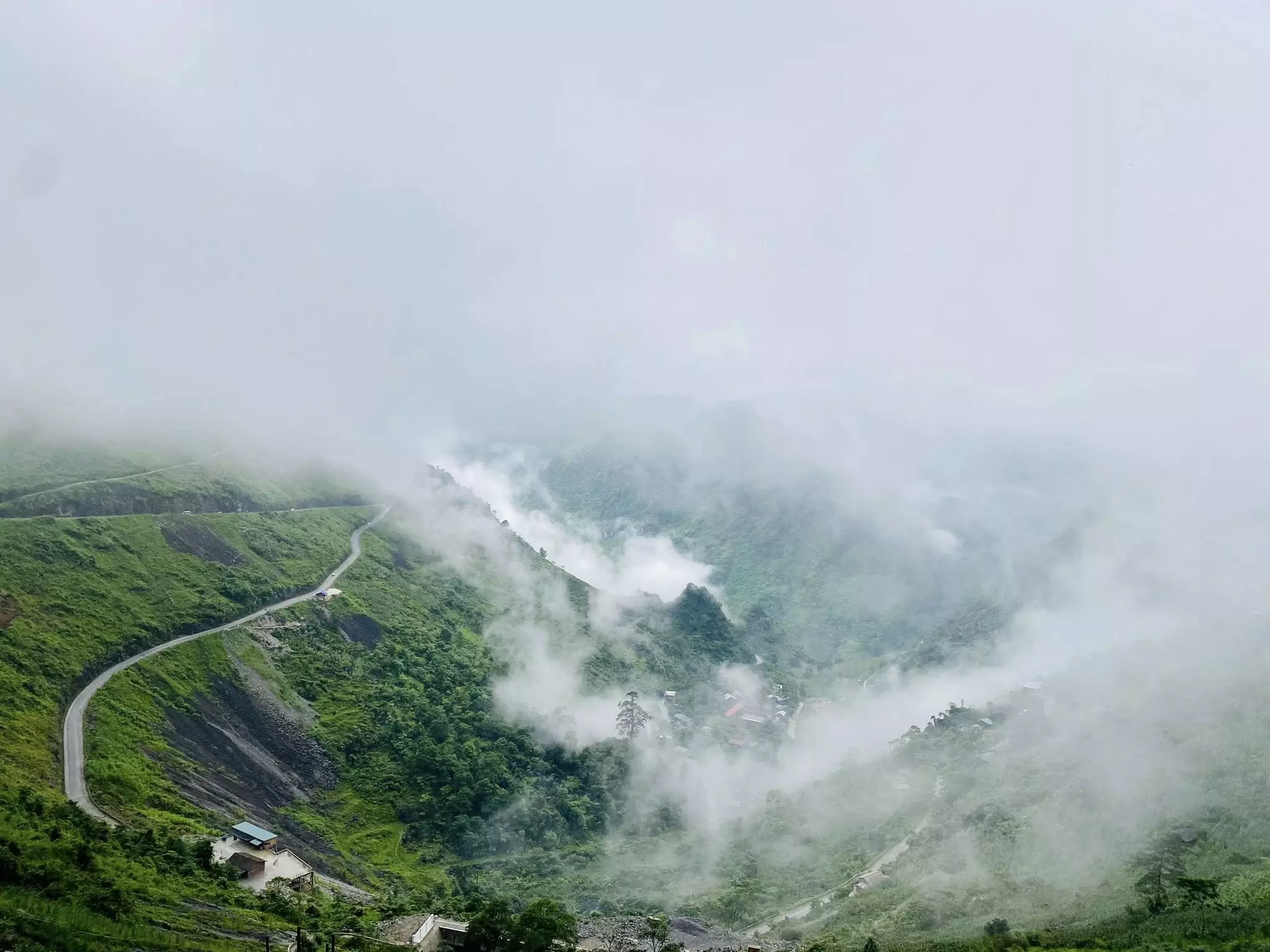
Panoramic view of the majestic “cat ear” mountains in Ha Giang – rugged, sharp limestone peaks rising into the clouds, creating a landscape that is both wild and awe-inspiring.
Recommended Local Tour Companies with Strong Reputations and High Ratings
When planning a journey through Ha Giang, one of the most shared Ha Giang Loop tips is to choose a professional, locally knowledgeable tour operator that truly accompanies you every step of the way. ZingHome has emerged as a trusted name among travelers in recent years, known for its quality service and authentic, in-depth experiences.
Why choose ZingHome?
Local guides who speak English and know the land well: ZingHome’s team of local guides not only ensures a safe ride but also acts as storytellers offering you a genuine understanding of the culture, traditions, and daily life of ethnic communities in Ha Giang.
Flexible, personalized itineraries: Depending on your interests, time, and fitness level, ZingHome Ha Giang creates tailored tours from classic 3-day-2-night routes covering highlights like Tham Ma Pass, Ma Pi Leng Pass, Lo Lo Chai Village, Du Gia, to more immersive experiences via homestays or trekking routes.
Safety as top priority: ZingHome provides high-quality motorbikes, full protective gear, and thorough bike checks before each trip. If you’re not confident riding, you can opt for their Easy Rider service letting a local driver take the wheel while you relax and enjoy the views.
All-inclusive, no hidden costs: Tour prices cover everything motorbike or Easy Rider, fuel, guide, meals, accommodation, and entrance fees. No surprise costs along the way.
Clean, friendly homestay in Ha Giang City: As the operator of a homestay in the heart of Ha Giang City, ZingHome offers a convenient and cozy place to start or end your journey. Rooms are clean, comfortable, and offer mountain views—just a few minutes’ walk from the bus station.
Embarking on the Ha Giang Loop is more than just a scenic ride it’s a transformative journey where nature, culture, and adventure merge in ways few other destinations can offer. Whether you choose the freedom of solo travel or the comfort of a guided tour, one of the most valuable Ha Giang Loop tips is simple: be prepared. From weather shifts to winding mountain passes, thoughtful planning will help you embrace every moment with confidence and curiosity.
Each bend in the road reveals a new panorama towering limestone peaks, golden rice terraces, or mist-covered valleys. But beyond the landscapes, it’s the local people, the shared meals, and spontaneous encounters that add real meaning to your story. With this guide, you now have the tools to explore not just with your eyes, but with an open heart and respectful spirit.
So pack your gear, keep your mind open, and let the Ha Giang Loop take you on a ride you’ll never forget. Let every kilometer create a memory, every conversation spark connection and every sunrise remind you why you came. Embrace the adventure, and let northern Vietnam leave a lasting imprint on your soul.















